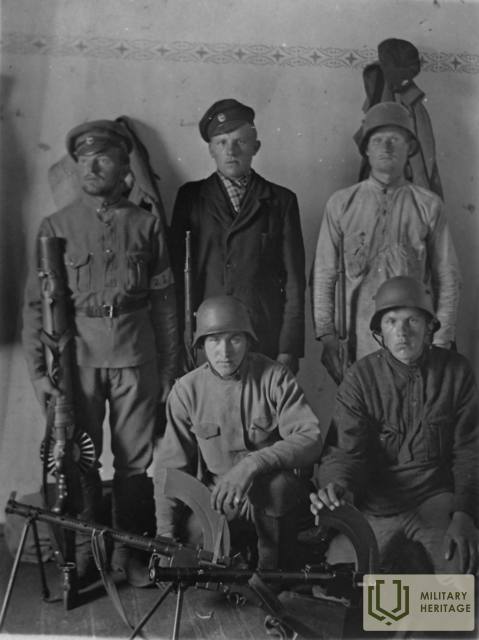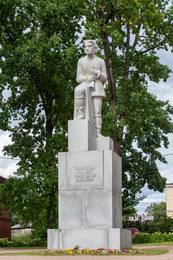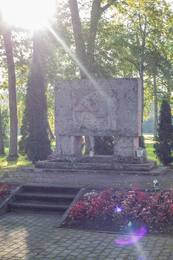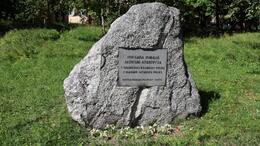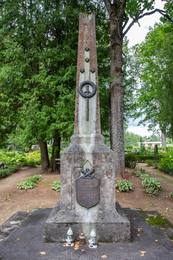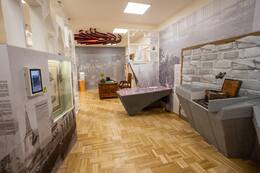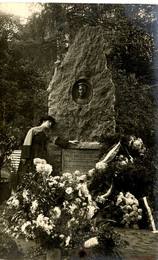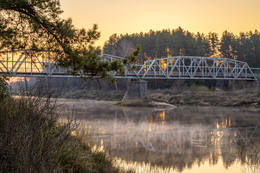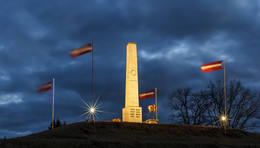Nordlettische Brigade I Die Unabhängigkeitskriege

Šiaurės Latvijos brigada buvo Latvijos karinė formacija Latvijos nepriklausomybės karo metu, kuri buvo suformuota 1919 m. vasario ir kovo mėn. Latvijos ir Estijos vyriausybių atstovų susitarimu Estijos teritorijoje ir Estijos kariuomenės išlaisvintuose Šiaurės Vidžemės regionuose.
Vasario 3 dieną Latvijos gynybos ministras Jānis Zālītis paskyrė Jorģis Zemitāns visų Latvijos karių Estijoje ir Šiaurės Latvijoje organizatoriumi ir vadu, o inžinierius Markas Gailītis – jo įgaliotu atstovu civiliniuose reikaluose. Per trumpą laiką buvo suformuotas 1-asis Valmieros pėstininkų pulkas, kuris kovo pabaigoje išėjo į frontą. Kovo 31 d. Estijos kariuomenės vyriausiojo vado įsakymu buvo įkurta Šiaurės Latvijos brigada, kuriai vadovauja pulkininkas Zemitāns, kurios štabas yra Tartu. Zemitanas savo padėjėju paskyrė pulkininką leitenantą Edvardą Kalninį, kuris vadovavo ir artilerijai. Štabo viršininkas buvo pulkininkas leitenantas Voldemaras Ozolsas. Iki 1919 metų liepos brigada logistikos ir operacijų atžvilgiu buvo pavaldi Estijos ginkluotųjų pajėgų štabui ir Estijos kariuomenės vyriausiajam vadui.
1919 m. gegužės pabaigoje Šiaurės Latvijos brigadą sudarė 1-asis Valmieros pulkas su 1100 kareivių, 2-asis Cėsių pulkas su 1700 kareivių, partizanų pulkas su 200 kareivių, viena eskadrilė su 50 kavalerijos karių ir 1-asis Valmieras 21-osios baterijos baterijos ists. Iš viso jį sudarė 110 karininkų ir 3400 kareivių. Brigadai trūko ginklų, daugelis karių iš pradžių dėvėjo civilius drabužius ir dėvėjo batus arba vaikščiojo basi.
Nuo 1919 metų balandžio pradžios Šiaurės Latvijos brigada kartu su Estijos kariuomene kovojo prieš bolševikų Raudonąją armiją, kad išlaisvintų Vidžemę. Birželio mėnesį Šiaurės Latvijos brigada dalyvavo Cėsių mūšyje prieš Baltijos Landesverą ir Geležinę diviziją, kuriame kartu su Estijos kariuomene iškovojo pergalę. Liepos 3 dieną pasirašius Strazdumuižos paliaubas, Šiaurės Latvijos brigada į Rygą įžengė liepos 6 d.
1919 m. liepos mėn., kai buvo suformuota vieninga Latvijos kariuomenė, Šiaurės Latvijos brigada buvo pertvarkyta į Vidžemės diviziją.
Weitere Informationsquellen
Erikas Jacobsonas. Latvijos nepriklausomybės karas. Latvijos laikinosios vyriausybės ir jos ginkluotųjų pajėgų kova dėl Latvijos nepriklausomybės nuo 1918 11 18 iki 1920 08 11. – Nacionalinė enciklopedija: https://enciklopedija.lv/skirklis/22216-Latvijas-Neatkar%C4%ABbas-kar%C5%A1
Šiaurės Latvijos brigada. Vikipedija. https://lv.wikipedia.org/wiki/Zieme%C4%BClatvijas_brig%C4%81de
Laisvės kova: Latvijos nepriklausomybės karas (1918–1920) Latvijos valstybės istorijos archyvo dokumentuose, 1 dalis, 1918–1919 lapkričio 18 d. 2016 m. balandžio 16 d., kompl. E. Jēkabsons ir J. Šiliņš, Ryga, Latvijos nacionalinis archyvas, 2019 m.
„Kova už laisvę: Latvijos nepriklausomybės karas (1918–1920) Latvijos valstybės istorijos archyvo dokumentuose“ 2 dalis. 1919 m. balandžio 16 d.–liepos 10 d., Ēkabsons ir J. Šiliņš, Ryga, Latvijos nacionalinis archyvas, 2019 m.
Zugehörige Zeitleiste
Zugehörige Objekte
Denkmal für die Befreiung von Rūjiena und den gefallenen Soldaten der nordlettischen Brigade „Tālava Trumpeter“
Das Hotel liegt am zentralen Platz von Rūjiena.
Das drei Meter hohe Bild eines alten lettischen Wächters, der in grauen finnischen Granit gemeißelt ist und „Tālava-Trompeter“ genannt wird, steht auf einem drei Meter hohen Granitsockel, aber die Gesamthöhe des Denkmals erreicht 7,5 Meter. In den ersten Skizzen und Modellen hatte K. Zemdega ihm ein Schwert in die Hand gegeben, das später durch eine Trompete ersetzt wurde. Das Denkmal wurde am 15. August 1937 enthüllt.
Dieses Denkmal spiegelt die schwierige Situation bei der Bildung unseres Landes und unserer Armee sowie bei der Bewertung dieser Ereignisse wider. Unmittelbar nach der Ausrufung des lettischen Staates marschierte die Rote Armee ein und die Übergangsregierung von Kārlis Ulmanis richtete in Liepāja eine Zuflucht ein. Im Februar 1919 begann mit Hilfe der estnischen Armee die Befreiung Lettlands vom Norden und die erste Mobilisierung in der Gegend von Rūjiena für die in Tartu gebildeten lettischen Truppen, die zur nordlettischen Brigade unter dem Kommando von Oberst Jorgis wurden Zemitaner. Die nordlettische Brigade kämpfte nicht nur gegen die Bolschewiki, sondern auch gegen die Landeswehr und die Eiserne Division in den Schlachten von Cēsis. Die Soldaten Nordlettlands, die in der Nähe von Rūjiena mobilisiert wurden, kämpften auch in den nachfolgenden Kämpfen des Unabhängigkeitskrieges. Nach dem Krieg wurden die Hauptlorbeeren von General Jānis Balodis und der von ihm kommandierten südlettischen Brigade gewonnen, aber er vergaß oft die nordlettische Brigade. Das in Rūjiena geplante Denkmal für Rūjiena wurde lange Zeit gebaut, und das 1937 enthüllte Denkmal wurde offiziell als Denkmal für die Befreiung von Rūjiena und das Gedenken an gefallene Soldaten populär gemacht, ganz zu schweigen von den Anfängen von alle Regimenter in Nordlettland.
Das Denkmal ist nicht nur eine beliebte Sehenswürdigkeit für lettische und estnische Touristen, die gewissermaßen ein Ausgangspunkt für den Besuch mehrerer anderer Gedenkstätten des Unabhängigkeitskrieges in Rūjiena ist, sondern „Tālavas taurētājs“ ist auch ein Zwischenstopp für estnische und Lettische Beamte verschiedener Ebenen.
Das Denkmal der Befreiung und der gefallenen Soldaten von Rūjiena, besser bekannt als „Talawa-Trompete“, wurde am 29.10.1998 in die Liste der staatlich geschützten Kulturdenkmäler als Kunstdenkmal von nationaler Bedeutung aufgenommen (Denkmalschutzregistrierung Nummer 4522).
Denkmal für die Befreier Nordlettlands
Das Hotel liegt im Zentrum von Placa an der Autobahn Inčukalns - Valka (A3). Neben Bushaltestelle und Volkshaus Straupe.
Zu sehen ist das Denkmal von Teodors Zaļkalns für die Befreier Nordlettlands 1919 in der Schlacht bei Cēsis.
Auf dem dreistufigen Sockel befinden sich zwei Kalksteinstützen, auf denen der Kalksteinblock ruht. Davor zeigt der untere Teil ein Pferd, das an einen Pflug gespannt ist, und einen Pflug, der in der rechten Hand Zügel und in der linken ein Schwert hält. Ein eingravierter Text auf der Rückseite des Denkmals, geschlossen durch Zeilen des Dichters Eduards Virza:
FÜR DIE VERÖFFENTLICHUNGEN VON NORD-LETTLAND
WÄHREND DAS GETREIDE AUF DIESEN FELDERN SAATST
SIE WERDEN GLORIFIZIERT UND GEEHRT WERDEN
Das Denkmal wurde am 8. November 1931 enthüllt. Präsident Alberts Kviesis nahm an der Eröffnungszeremonie teil.
Gedenkstein für die Befreier von Alūksne
Das Hotel liegt in Alūksne, an der Kreuzung der Straßen Helēnas und Alsviķu.
Der Gedenkstein wurde am 29. Mai 1999, dem 80. Jahrestag der Befreiung von Alūksne, enthüllt. Das Steinschmieden führte der Bildhauer Ainārs Zelčs durch.
Am 31. März 1919 wurde in Tartu eine nordlettische Brigade gegründet, um Vidzeme und Latgale zu befreien. Die Brigade bestand aus dem kombinierten 1. Valmiera- und 2. Cēsis-Infanterie-Regiment, später auch dem nordlettischen Partisanen-Regiment, zwei Kavalleriegeschwadern und zwei Artillerie-Batterien. Am 26. Mai besetzten diese Kräfte Valmiera, aber am 27. Mai griff das 1. Valmiera-Infanterie-Regiment zusammen mit dem 2. estnischen Kavallerieregiment in Richtung Alūksne an. Die Bolschewiki konnten weitere Angriffe nicht abwehren und am 29. Mai 1919 wurde Aluksne befreit.
Denkmal zum Gedenken an die im Unabhängigkeitskrieg getöteten Soldaten
Befindet sich auf dem Bertulis-Friedhof.
Ein Denkmal für die im lettischen Unabhängigkeitskrieg gefallenen Soldaten ist zu sehen.
Entdeckt am 4. August 1934. Das Denkmal wurde von Teodors Šķiņķis und Luda Švalbe entworfen.
Vor dem Denkmal, das den Triumph des Sieges symbolisiert, befinden sich ein Bronzeschwert, ein Eichenblattkranz und vier Sterne (Ohrringe), die vier historische Regionen Lettlands symbolisieren - Vidzeme, Kurzeme, Zemgale und Latgale.
Auf der anderen Seite, die den Weg vergangener Leiden symbolisiert, ist an dem ursprünglich in einen Kranz aus Stacheldraht gehüllten Obelisken ein bronzenes Kreuz angebracht. Der für den Kranz verwendete Stacheldraht wurde von Death Island mitgebracht.
Das Denkmal wurde im Sommer 1989 restauriert und alle Bronzedetails wurden neu angefertigt.
„Valka – Wiege der lettischen Unabhängigkeit“ - Ausstellung im Heimatmuseum Valka
Das Heimatmuseum Valka befindet sich auf der rechten Straßenseite der Rīgas iela stadtauswärts, im Gebäude des einstigen Livländischen Lehrerseminars. Von 1853 bis 1890 diente der Bau als Lehrerseminar der Livländischen Gemeindeschulen. Bis 1881 wurde die Bildungseinrichtung vom lettischen Pädagogen und Mitbegründer der Chorkultur Jānis Cimze geleitet. Nach der Schließung des Lehrerseminars diente das Gebäude 80 Jahre lang verschiedenen Bildungs-, Kultur- und Alltagszwecken. Seit 1970 ist das Heimatmuseum Valka hier untergebracht. Die Dauerausstellung des Museums „Valka - Wiege der lettischen Unabhängigkeit“ erzählt die Geschichte der gesellschaftspolitischen Umbrüche in Valka zwischen 1914 und 1920, als Lettland ein unabhängiger Staat wurde. Die Ausstellung veranschaulicht die Vorarbeiten zum Aufbau eines lettischen Staates und die Gründung der Nordlettischen Brigade in Valka. Durch vier Dimensionen – den Weg, den Rat, das Hauptquartier und die Heimat – beleuchtet die Ausstellung die Themen: die Stadt Valka, die Kriegsflüchtlinge, die Gründung des Lettischen Bauernbundes und des Provisorischen Lettischen Nationalrates 1917, das Provisorische Lettische Nationaltheater 1918, das Iskolat - die provisorische Regierung Sowjetlettlands, die Bildung der Nordlettischen Brigade 1919 und General Pēteris Radziņš. Neben traditionellen Ausstellungsmethoden kommen im Museum multimediale Präsentationen zum Einsatz.
Monument to the sea lieutenant, L.k.o.k. Vilis Gelb (1890-1919)
Located in Limbažu Jūras iela cemetery, Jūras iela 56, Limbaži
The monument opened on September 10, 1922 by the then President of Latvia Jānis Čakste, on which the dedication of the poet Viļas Plūdonis to Vilis Gelb is read:
"Compatriots who pass by me, light up in the love of the fatherland,
for the beloved fatherland, I pledge my life."
Vilis Gelbe (1890-1919) was born in Kurzeme, Zemīte parish, but he is also closely related to the Limbaži side, because at the beginning of the Latvian War of Independence, he returned to Latvia from St. Petersburg and joined the North Latvian Brigade.
In May 1919, V. Gelbi commanded Limbaži, he became the military commandant of the area and was able to inspire local men and also very young guys to join the army.
V. Gelbe's activity at that time in Limbaži and its surroundings was very important, his duties included not only maintaining order in the city and its surroundings, but also mobilization, providing food for soldiers and horses, and solving many other issues that cannot be included in orders and instructions. The Commandant's team organized by him acted as a coordinated mechanism to provide the North Latvian Brigade with the most effective assistance possible. The commander's team went to the aid of the regular army in special cases, and he set an example for the new soldiers. V. Gelbe was the first Latvian army officer who proposed to award his subordinates with the III class of the Order of Imanta. There was no order yet. Imanta's name appeared in the open only on March 20, 1920, when the minister of defense, Karls Ullman, was presented with an outline of the establishment of the military order. However, the name of Lāčplėš was chosen for the order.
Vilis Gelbe died during the battles of Cēsis - on June 19, 1919, during a reconnaissance. Later, Gelb was awarded the Láčplēš War Order, however, historians believe that his contribution has not been properly appreciated until now. This is mainly explained by Gelbe's membership in the Northern Latvian Brigade.
The so-called Southern Latvian brigade, which was initially commanded by Oskars Kaplak, later Jānis Balož, competed with the Northern Latvian brigade, which was commanded by Jorģs Zemitāns.
Iron bridge over Gauja in Valmiera
It is located in Valmiera, near the Gīme nature trail on Leona Paegles street.
The steel construction iron bridge over the Gauja was built in 1911. It connected the 114 km long route Ainaži-Valmiera-Smiltene, which was last completed in 1971.
After the liberation of Riga, on May 22, 1919, parts of the Soviet Latvian army, without showing serious resistance, retreated along the entire front. On May 26, the Estonian National Army and the Northern Latvian Brigade led by Colonel Jorģs Zemitān occupied Valmiera. "The bigots blew up the railway bridge around six o'clock in the afternoon. At 7:50 both wooden bridges were also set on fire. This did not prevent Estonian troops from entering the city from the side of the Valmiera manor in the evening of the same day* [..]"
Today, the iron bridge is a favorite place for recreation and walking and a section of the "Green Railway" bicycle route.
* The cadet company of the 6th Estonian Infantry Regiment was the first to arrive, accompanied by several armored vehicles.
Monument to the soldiers who died in the First World War and the Latvian War of Independence
Located on Baznīcas Street opposite St. Anne's Church.
A monument to the soldiers who died in the First World War and the Latvian War of Independence can be seen.
On May 1, 1923, a "Hero's Grove" was planted opposite the Mazsalaca Lutheran Church, where an oak tree was dedicated to each fallen. According to Likert, a total of 97 oaks were planted - 23 for the fallen in the War of Independence and 74 for the fallen in the First World War. However, the press at the time mentioned that 106 oaks had been planted.
On August 21, 1927, a concrete monument built by architect Pauls Kundziņš was unveiled in the Heroes' Square, in the construction of which the sculptor Vilhelms Treijs also participated.
The monument is located next to the church of St. Anne in Mazsalaca, which was built in a specially designated place to slide (58.6 m), the beautiful tower can be seen from afar. The church is well preserved, as it was neither destroyed nor adapted for any other use during the Soviet era.
Monument to the soldiers of the 7th Sigulda Infantry Regiment who died in the Latvian War of Independence
Located on the shores of Lake Alūksne, on the edge of Pleskavas Street (Kolberg Road).
On June 22, 1923, the President of Latvia, Jānis Čakste, unveiled a monument to the fallen soldiers of the 7th Sigulda Infantry Regiment. The monument is based on the design of the artist Jūlijs Miesnieks.
The soldiers of the regiment also improved and maintained the area around the monument. Soldiers gathered at the monument on the eve of the regiment's annual holiday, when the holy fire was lit, as well as on the day of the regiment's year after the parade and intercession in the garrison cemetery.
1940/1941 The Bolsheviks removed and destroyed the plaque in 1953, but the monument itself was demolished in 1953 and its stones were laid in the foundations of the corner of the barracks house.
At the beginning of the Awakening, in the autumn of 1989, the vicinity of the destroyed monument, which was still in the territory of the USSR occupation forces, was cleaned up. On November 11, a temporary granite memorial was unveiled at the former location of the monument, with the text: "The monument of the 7th Sigulda Infantry Regiment will be restored in this place on November 11, 1989."
Thanks to the initiative of U. Veldre, the head of the Alūksne Brothers Cemetery Committee, the restoration of the monument was started and on October 16, 2009 the restored monument was unveiled.
Unlike the original monument, a cross was created on the obelisk regiment instead of a chest sign. Both sculptures of the monument were wrought by the sculptor Ainars Zelcs. Both the part of the 22 original obelisk blocks found on the territory of the National Armed Forces Infantry School and the newly built blocks were used for the restored monument.
On June 20, 2019, as part of the centenary of the Sigulda Infantry Regiment, a memorial site and a granite memorial plaque to the fallen soldiers of the unit were unveiled at the foot of the monument hill. The memorial site was built with funds donated by the staff of the Infantry School of the National Armed Forces.
Susijusi istorija
Šiaurės Latvijos kariuomenės įkūrimo Rūjienos pusėje fragmentas
Šiaurės Latvijos armija buvo Latvijos karinė formacija Latvijos nepriklausomybės karo metu, kuri buvo suformuota 1919 m. vasario 3 d. – kovo 31 d. Estijos teritorijoje ir Estijos kariuomenės išlaisvintuose šiauriniuose Vidžemės regionuose. Iki 1919 metų liepos brigada logistikos ir operacijų atžvilgiu buvo pavaldi Estijos ginkluotųjų pajėgų štabui ir Estijos kariuomenės vyriausiajam vadui. Tada ji buvo sujungta su Pietų Latvijos brigada ir suformuota Latvijos armija.
Cėsių mūšio pradžia, eiga ir pabaiga
Pergalei Cėsių mūšyje buvo lemta tapti lūžiu latvių ir estų kovoje už savo šalies nepriklausomybę. Ši pergalė padarė tašką Andrievo Niedros vyriausybės ir vokiečių generolo Rüdigerio von der Goltzo planams užkariauti Baltijos šalis. Vietoj to Liepojoje savo veiklą atnaujino Laikinoji Latvijos vyriausybė, vadovaujama Kārlio Ulmanio.
Apie tautos patriotą pirmąjį leitenantą Vilį Gelbį
Pulkininko leitenanto Vilio Gelbės (1890-1919) likimas atspindi sunkią mūsų valstybės ir kariuomenės formavimosi situaciją bei šių įvykių vertinimą.
1918 m. lapkričio 18 d. paskelbus Latvijos valstybę, prasidėjo ir jos Nepriklausomybės karas bei ginkluotųjų pajėgų kūrimo darbai. Latvių karių savanorių priešakyje buvo Kuržemėje gimęs karinio jūrų laivyno leitenantas Vilis Gelbė.
Apie pirmąjį Latvijos kariuomenės vadą Dāvidą Sīmansoną
Knygoje „Latvijos kariuomenės vadai“ esantys rašiniai įtikina, kad istorijai didelę įtaką daro konkretūs asmenys. Nors svarbiausių istorinių įvykių epicentre jie buvo neilgai, tikri Latvijos patriotai, turėdami turtingą karinę patirtį, sugebėjo daug nuveikti formuojant ir stiprinant Latvijos kariuomenę bei istorinių įvykių lūžio momentuose.
Ši istorija pasakoja apie pirmąjį Latvijos kariuomenės vadą Dāvidą Sīmansoną (1859-1933).
7. Siguldos pėstininkų pulko formavimas
1919 m. birželio 20 d. Naukšėnų dvare, Rūjienos apylinkėse, pagal Šiaurės Latvijos brigados vado pulkininko Jorgio Zemitano įsakymą pradėtas formuoti 7-asis Siguldos pėstininkų pulkas. Iš pradžių iš Šiaurės Latvijos brigados rezervinio bataliono buvo suformuota nedidelė kovinė grupė, kurią sudarė 22 karininkai ir 1580 karių, kuri pirmojo vado Oskaro Dankerio garbei buvo pavadinta Dankerio divizija. Po kelių dienų dalinys buvo įtrauktas į 3-iojo Jelgavos pulko 2-ąjį batalioną, o rugpjūčio 23 d., papildžius kuopa, į 7-ąjį Siguldos pėstininkų pulką.




